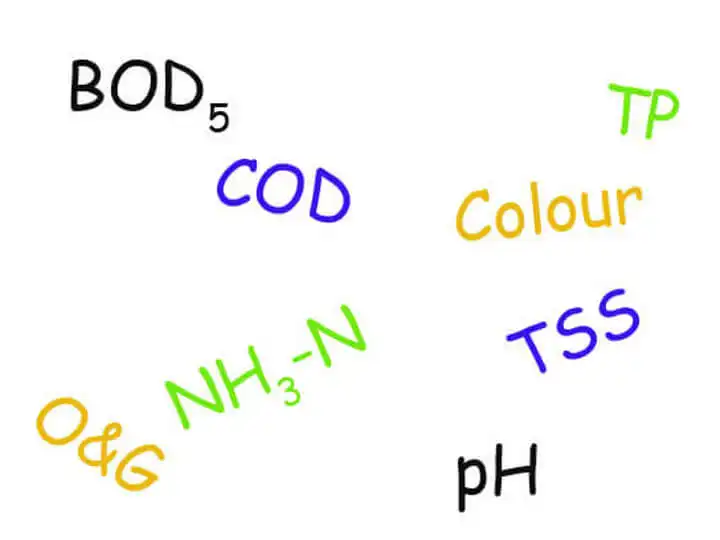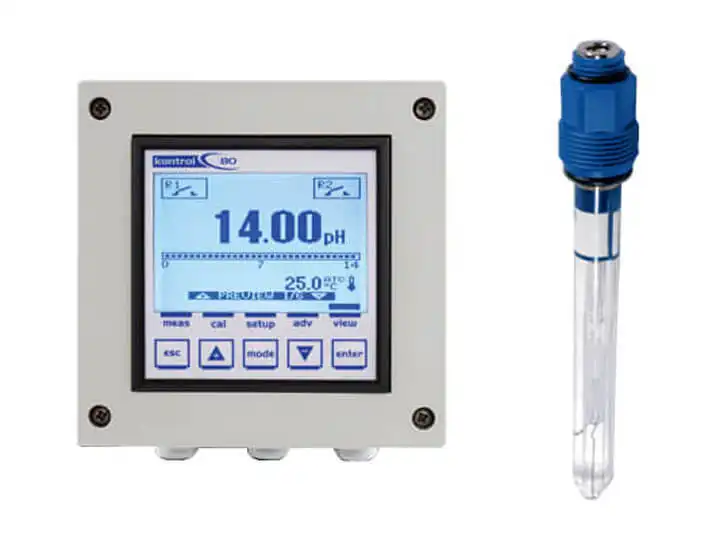To get a reliable solution for wastewater treatment, the clients generally are required to provide Wastewater Quality Analysis Report from a lab, which includes water parameters like BOD, COD, TSS, pH, etc. Why is this report so important?!
A workable wastewater treatment solution design is basing on careful calculation, rather than imagination. For example, BOD in influent is 200mg/l, while your local Emission Standards requires BOD in effluent 20mg/l. 200-20=180mg/l BOD should be removed from water, i.e. BOD removal rate 90%. By simple preliminary calculation, the designer will know better of your wastewater, then select suitable technology for it and make a great deal of calculation later to finally finish project design.


While, what does BOD means?
The most common water parameters on Wastewater Quality Analysis Report are BOD, COD, TSS and pH.
BOD = Biochemical Oxygen Demand, is the amount of dissolved oxygen needed (i.e. demanded) by aerobic biological organisms to break down organic material present in a given water sample at certain temperature over a specific time period. In a simple way, BOD is a water parameter to indicate the degree of organic pollution of water. The larger BOD value is, the heavier organic pollution is.
BOD test need around 20 days at temperature 20℃, wrote as BOD20. While 20 days is too long, not acceptable. Investigators found that test result in a period of 5 days, wrote as BOD5, can be approximately 68%-70% of the result in 20 days. 5 days is much more acceptable than 20 days in real working. Now BOD5 is used in worldwide to describe the degree of organic pollution of water.
* * * * *
COD = Chemical Oxygen Demand
It is an indicative measure of the amount of oxygen that can be consumed by reactions in a measured solution.
In a simple way, you can say, COD is similar as BOD, it is also a water parameter to indicate the degree of organic pollution of water. Investigators use Potassium Dichromate(K2Cr2O7) as oxidizing agent to get COD value, wrote as CODcr. Test process of COD is fast, only need 20-30 minutes. Then, what's the difference between BOD and COD? Why there are 2 similar water parameters showing on report?
ANSWER:
BOD represents the degree of BIODEGRADABLE organic pollution of water. While COD represents degree of COMPLETE organic pollution. K2Cr2O7 can oxidize both BIODEGRADABLE and BIOREFRACTORY organic pollutant, it even can oxidize reductive inorganic pollutant. So, COD value is always > BOD.
If BOD/COD >=0.3, we can say that the wastewater is with good biodegradability, you can use biological treatment to purify the water. While if BOD/COD < 0.3, the water is with bad biodegradability.
* * * * *
TSS = Total Suspended Solids, it is the dry-weight of suspended particles, that are not dissolved, in a sample of water that can be trapped by a filter that is analyzed using a filtration apparatus.
In a simple way, you can say that TSS indicates the insoluble solids content in a water sample, in mg/l. It is more easier to understand than BOD and COD. While please note that TSS is not equal to TS, even though they 2 are similar in spelling. TS mean Total Solids = TSS(Total Suspended Solids) + TDS(Total Dissolved Solids).
* * * * *
pH is a scale used to specify how acidic or basic a water-based solution is. At 25 °C, solutions with a pH less than 7 are acidic and solutions with a pH greater than 7 are basic.
Generally flocculation reaction requires water pH around 8.5, if the wastewater is with too small or too large pH value, then an Automatic pH Regulator with Online pH Meter will be needed to monitor water pH and dose Acid/Alkali to adjust water pH.

Contact: Eng. Dover
Mobile: +86 17561675721
Whatsapp: +86 17561675721
QQ: 1049235017
Wechat: 1049235017
Email: dover@cnwwtp.com
Addr: Beiling, Machang Vil.
City: Qingdao, China.
